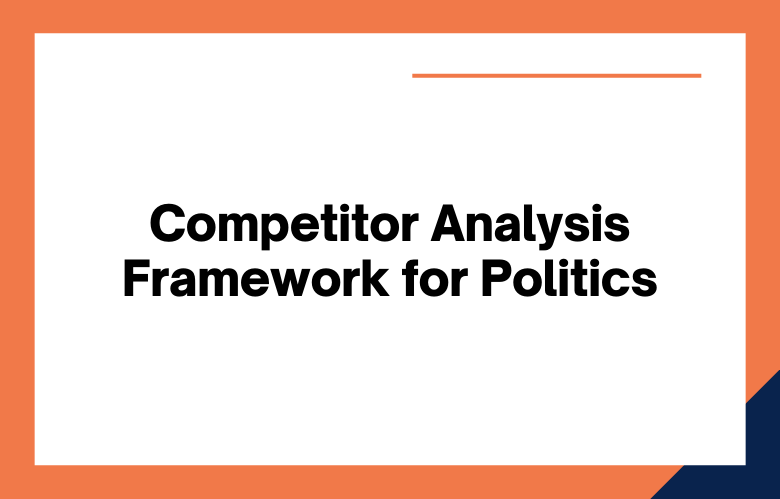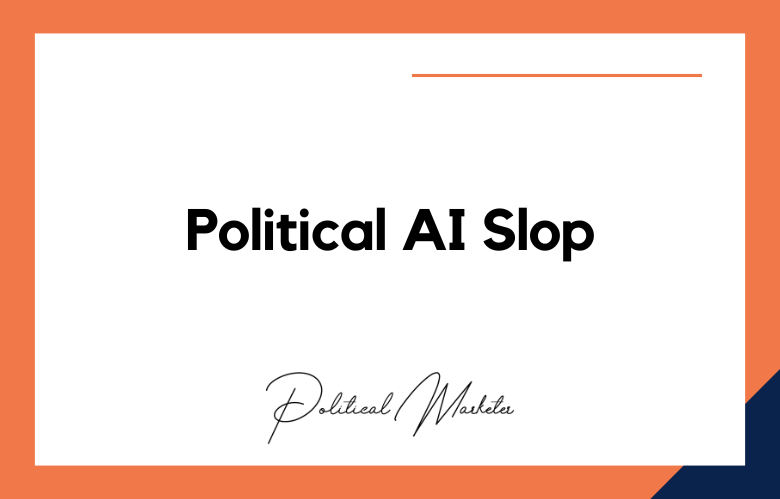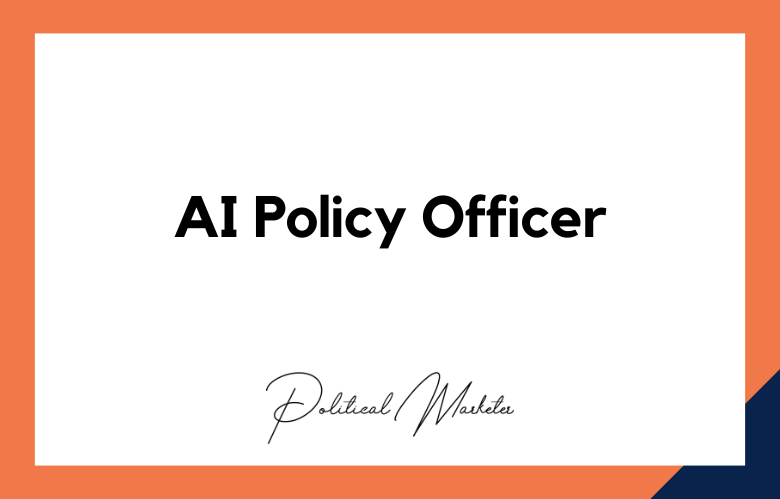Every party wants to know what other parties are doing, what policies they’re proposing, and how they perform in the polls. The Competitor Analysis Framework can help you do just that. It provides a structured way of analyzing your competitors so you can understand their strengths and weaknesses relative to your party. We will walk through the Competitor Analysis Framework and show how it can help political parties.
What is a Competitor Analysis Framework?
A Competitor Analysis Framework is a comprehensive structure that you can use to analyze your competitors.
A Competitor Analysis Framework is a way to evaluate the strengths and weaknesses of your competitors and determine how you can use that information to improve your business.
A competitor analysis framework is a strategy to evaluate your competitors. This can be used for internal and external reasons, such as benchmarking or analyzing the process of others.
A competitor analysis framework is a process by which you can check on your competition and figure out how to beat it.
A Competitor Analysis Framework is a set of tools, methods, and techniques to understand competitors’ behavior.
A Competitor Analysis Framework is a set of questions to analyze and compare competitors.
How Does Competitor Analysis Framework Help Political Party
The framework helps you understand what strategy your competitors are using. You will determine the type of campaign they’ll use, which means you can counter it with a similar movement but with some unique aspects.
The political party is an integral part of the democratic process, even though it may not seem.
Political parties analyze the strengths of their opposition to improve their operations. Similarly, businesses need to understand how the competition works to do better.
This framework works well for political parties because it is simple yet effective. A party can use this to analyze its competitors and determine how they did in the last elections.
The Competitor Analysis Framework helps political parties understand their opponents and work with them better. A political party’s purpose is to be elected and stay in power.
A competitor analysis framework is valuable for political parties to identify their competitors’ strengths and highlight these weaknesses.
The Competitor Analysis Framework helps political parties to analyze their opponents and gain insights into their strategies. This saves the party a lot of time that would have otherwise been spent researching the other party.
- Introduce the competitor analysis framework and explain its purpose
- Please explain how the framework can be used to help political parties understand their competitors and assess their strengths and weaknesses
- Give a few examples of how the framework could be used in practice
- Discuss the benefits of using the framework and offer some advice for those who want to try it out
- Close with a few thoughts on the future of competitor analysis in politics
- Introduce the competitor analysis framework and how political parties can use it
- Discuss the different factors that need to be considered when analyzing competitors
- Analyze the two main political parties in the United States using the competitor analysis framework
- Offer recommendations for how each party could improve its standing based on the findings of the analysis
- Conclude with a summary of the results and what they mean for political parties moving forward
How political parties use it to strategize and win elections
Firstly, political parties use Facebook to reach out to the target audience. They create a page for their campaign and then share it with friends and family to maximize their chances of being elected.
They use the information to craft their message, inform potential voters about candidates and issues, and mobilize supporters.
The marketing strategy of political parties includes using big data to learn about the public and target them with specific messages. These strategies have been used since the 1980s when each party began hiring companies that used computers to communicate better with their voters.
Political parties use social media to reach out to voters and influence them. They do a few things with this, such as creating hashtags that people can easily use to discuss their party. This way, the parties can see what issues.
Political parties use elections to their advantage because they know how important it is to get votes.
Ways to Do a Competitor Analysis for a Political Party
- Identify the party’s strengths and weaknesses
- Develop a list of critical policies that are different from other parties
- Find out what voters want to hear, not just what they need to hear
- Identify the party’s goals
- Analyze how well they are achieving those goals
- Analyze what other parties are doing and their success at their destination.
- Review the current political climate to see if anything may negatively affect the party.
- Understand the party’s values, goals, and philosophies
- Find out what their campaign promises are
- Review any recent reports of scandals or other events affecting them negatively.
- Compare their platforms to other parties to identify where they differ or overlap.
- Research the party’s website and social media accounts
- Analyze their marketing strategy
- Compare the party to other parties in power, both locally and nationally
- Research their website and social media to see what they’re posting
- Look at their followers on Facebook, Twitter, Instagram, etc.
- View any videos or photos of the party’s events
- Check out their logo to see if it looks outdated or not
- Find out who the party’s main competitors are
- Research what policies they offer and how the public is receiving those policies.
- Look at their campaign strategies- how do they market themselves? What is their message? How does that compare to your own party’s messaging?
- Find your competitors
- Analyze their strengths and weaknesses
- Evaluate what they are doing well and how you can improve on that success
- Consider the demographic of people they are trying to reach
- Research the party’s website and social media accounts
- Analyze the party’s policies to see how they might affect your industry or business
- Find the party’s website
- Check out their social media platforms
- Read articles about them in major publications, including newspapers and magazines.
- Watch videos of speeches by critical leaders or spokespeople for the party.
Conclusion
The Competitor Analysis Framework is a structured approach to analyzing your competition. It can be used in digital marketing or any other business field, but it’s beneficial for political parties to decide their strategy. If you want help understanding your strengths relative to competitors, contact us today!
One way to get in touch is by filling out our online form on this site or give us a call at +91 9848321284. Let’s work together today!
Competitor Analysis Framework Help Political Party: FAQs
What’s a competitor analysis framework in political campaigns?
It’s a method for studying your rivals—how they speak, what they stand for, and where they’re vulnerable—so you can make smarter decisions about your own approach.
Why should political parties study their opponents?
Because instincts alone aren’t enough. You want to base your strategy on real patterns and trends, not guesses.
How does this kind of research improve campaign messaging?
By seeing what’s resonating—or falling flat—for your opponents, you can shape messages that stand out and connect better with the people you’re trying to reach.
Where does the data come from?
Mostly from public sources like speeches, press coverage, voting history, donation records, and social media activity. Some teams also use sentiment analysis tools.
Can it help you spot swing voters?
Yes. It can highlight people who are undecided or open to changing their minds, helping you focus your outreach where it matters.
How accurate are these insights?
That depends on the quality of the data. Clean, current information leads to better predictions. Outdated or messy data will steer you wrong.
Is this kind of analysis only useful in big elections?
Not at all. Local campaigns benefit just as much—sometimes more—because smaller audiences mean clearer patterns.
How does it help with ad targeting?
If you know who’s likely to respond, you can tailor ads for those people. That keeps your budget focused on the voters who are most likely to listen.
What tools are commonly used for this?
Tools like SEMrush, Brandwatch, CrowdTangle, and BuzzSumo help track what’s being said, shared, and searched across platforms.
How often should a campaign run this analysis?
It’s not a one-time thing. During election season, weekly or even daily updates can help you respond to shifts in tone or tactics.
Can this help in debates or interviews?
Yes. When you understand how your opponent thinks and speaks, it’s easier to prepare strong rebuttals or anticipate their talking points.
What about fundraising?
Tracking your opponent’s donation sources and timing helps you plan your own appeals—and avoid competing for the same donors at the same time.
Can this framework uncover alliances between rivals?
Sometimes. If two parties echo each other’s language or share backers, that may signal coordinated efforts.
Is artificial intelligence part of this process?
Yes. AI tools can scan large datasets and surface patterns that would take humans hours or days to find.
What happens if you skip this kind of work?
You’re flying blind. You may waste time, money, and energy on strategies that your opponents have already tested and failed at.
Is it ethical to study your rivals this closely?
As long as you’re using public data and staying within legal boundaries, yes. This is about strategy, not spying.
How do you use these insights to shape content?
You can avoid repeating what your opponents are doing and instead carve out your own space. Or you can directly respond to their weak points with stronger ideas.
What if you don’t have fancy tools or a data team?
You can still track your opponents manually. News coverage, public statements, and social media are good starting points. Just keep notes and look for patterns.
Can this analysis tell you if your campaign is working?
Yes. By comparing your progress with your opponent’s and watching how the public responds, you get a clearer picture of what’s landing.
Where does this fit into your overall strategy?
Everywhere. It affects messaging, outreach, fundraising, digital ads, and even ground efforts. When you know your competition, you’re in a better position to win.











